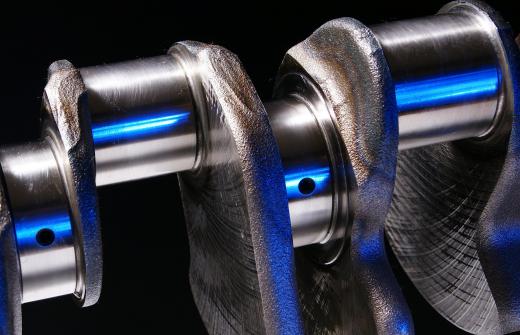A force dynamometer, or “dyno," is a piece of equipment that measures mechanical power, usually of a pushing, pulling, or turning force, called torque. These devices can be large machines used in manufacturing, standalone equipment to aid in physical rehabilitation and athletics training, or small, handheld devices that assist in small-scale load tests. Using digital or analog readout meters, these devices measure the forces applied to them through the use of various methods, depending on their situation; other types of measurements can include cutting, drawing, damping, and squeezing forces.
A force dynamometer can be used to measure anything from automobile engine power in revolutions per minute (RPM) to progress in the performance of isolated muscle groups. These devices are designed to fit with their corresponding prime movers through the use of attachments such as hooks, pads, squeeze levers, lever arms, and scales. The two major types of large-scale dynamometers are transmission and absorption type dynamometers. The transmission variety measures an elastic twist of an output shaft. The absorption type measures forces applied to a braking mechanism, dissipating the force as heat through the use of mechanical friction brakes, hydraulic water brakes, or electromagnetic force.

The type of force dynamometer used in automobile testing applications measures torque by attaching a restraining element to the output shaft. This element rotates with the shaft, and the dynamometer then reads the force required to arrest its own element rotation. Force multiplied by the length or distance of the lever arm gives the torque value. Engine dynamometers measure crankshaft torque, while chassis dynamometers provide data relating to mileage, emissions, and fuel economy performance.
The smaller variety of force dynamometer typically measures pushing and pulling forces, attaching via push pads or pull hooks. Handheld, scale-type dynamometers might use hydraulic or spring-loaded mechanisms in order to read functional capacities and load limits of small-scale forces. These measurements are usually displayed in terms of weight. These devices are rated within specific weight ranges, and are also known as force gauges, mechanical gauges, or tension gauges.
Force dynamometer technology assists in many industries, such as manufacturing, research and development, electronics, and telecommunications. Once used to evaluate tension on power lines, mechanical dynamometers provide useful service field testing for everything from rope rigging and rope rescue systems to engine belts and bicycle spokes. Software applications developed for accelerometer-equipped smartphones allow for measurements of acceleration, gravity, and horsepower; this suggests continuing development of applications for force measurements in virtual reality and real-world applications.
